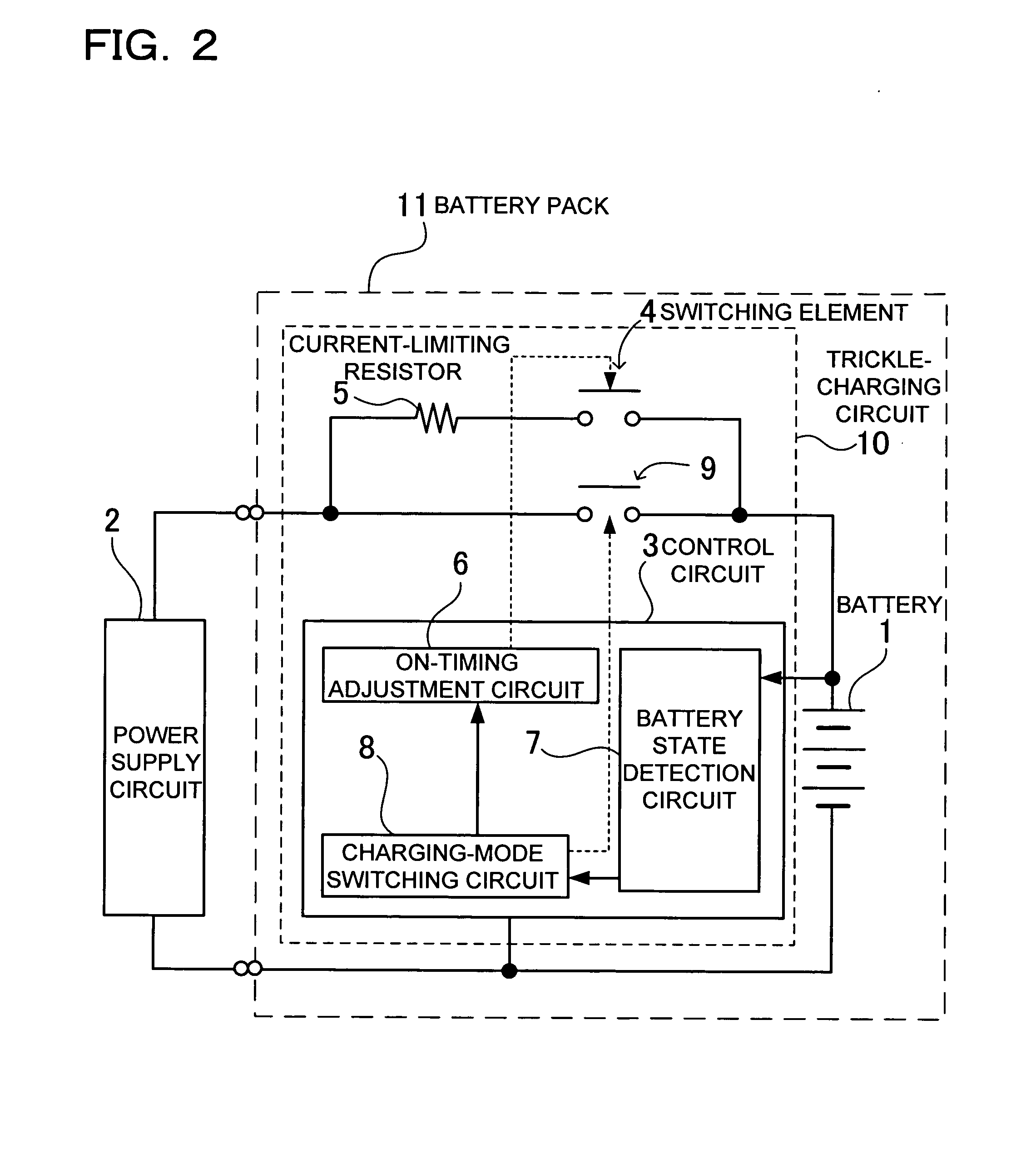Battery charging circuit
- Summary
- Abstract
- Description
- Claims
- Application Information
AI Technical Summary
Benefits of technology
Problems solved by technology
Method used
Image
Examples
Embodiment Construction
)
[0020]The charging circuit shown in FIG. 2 includes a power supply circuit 2 connected via a switching element 4 and a current-limiting resistor 5 to a battery 1 to subject the battery 1 to a trickle charge, and a control circuit 3 turning on and off the switching element 4 on a given duty to subject the battery 1 to the trickle charge by means of a pulsed charge. In addition, the charging circuit shown in FIG. 2 is provided with a main switch 9 for charging the battery 1 in a normal charging mode.
[0021]The switching element 4, in a state of subjecting the battery 1 to the trickle charge, is turned on and off by the control circuit 3 and subjects the battery 1 to the pulsed charge. A cycle of the switching element 4 to be turned on or off is set to be for a period of 1 sec to 10 sec, for example. The duty of turning on and off the switching element 4 serves to specify average time to be involved in subjecting the battery1 to the trickle charge. The average current can be made small...
PUM
 Login to View More
Login to View More Abstract
Description
Claims
Application Information
 Login to View More
Login to View More - R&D
- Intellectual Property
- Life Sciences
- Materials
- Tech Scout
- Unparalleled Data Quality
- Higher Quality Content
- 60% Fewer Hallucinations
Browse by: Latest US Patents, China's latest patents, Technical Efficacy Thesaurus, Application Domain, Technology Topic, Popular Technical Reports.
© 2025 PatSnap. All rights reserved.Legal|Privacy policy|Modern Slavery Act Transparency Statement|Sitemap|About US| Contact US: help@patsnap.com



